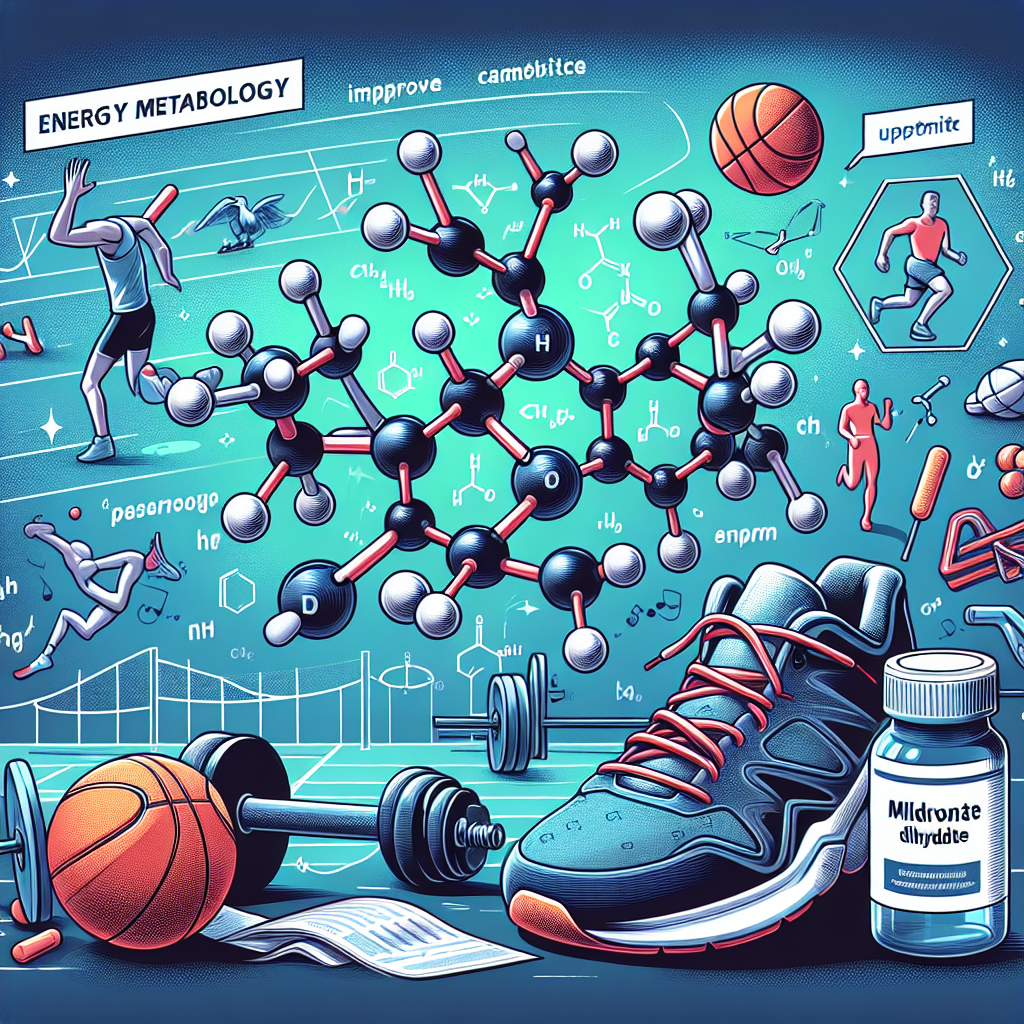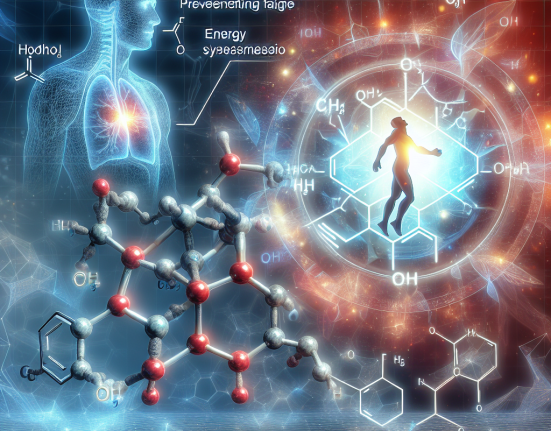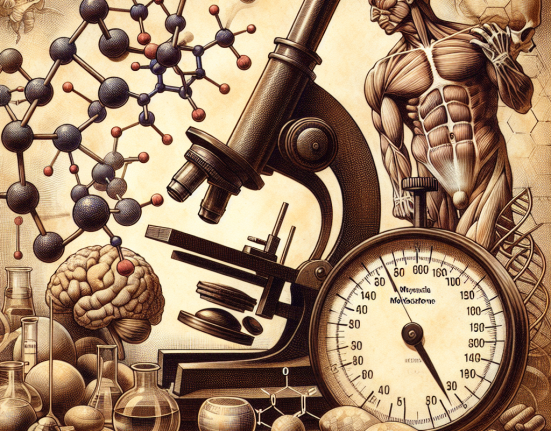-
Table of Contents
The Significance of Mildronate Dihydrate in Sports Pharmacology
Sports pharmacology is a rapidly evolving field that aims to enhance athletic performance through the use of various substances. One such substance that has gained significant attention in recent years is mildronate dihydrate. This drug, also known as meldonium, has been the subject of controversy and debate in the sports world. In this article, we will explore the pharmacological properties of mildronate dihydrate and its potential impact on athletic performance.
What is Mildronate Dihydrate?
Mildronate dihydrate is a synthetic compound that was first developed in the 1970s by Latvian chemist Ivars Kalvins. It is primarily used to treat cardiovascular diseases such as angina and heart failure. However, it has also been found to have potential benefits in sports performance.
The drug works by inhibiting the production of carnitine, a compound that plays a crucial role in energy metabolism. By doing so, mildronate dihydrate increases the body’s ability to use glucose as an energy source, leading to improved endurance and physical performance.
Use in Sports
Mildronate dihydrate gained widespread attention in 2016 when Russian tennis player Maria Sharapova tested positive for the drug during the Australian Open. She claimed to have been taking the drug for medical reasons, but it was later revealed that she had been using it for performance enhancement.
Since then, mildronate dihydrate has been banned by several sports organizations, including the World Anti-Doping Agency (WADA). However, it is still widely used by athletes, particularly in Eastern Europe, where it is readily available over the counter.
Pharmacokinetics and Pharmacodynamics
In order to understand the potential impact of mildronate dihydrate on athletic performance, it is essential to examine its pharmacokinetic and pharmacodynamic properties.
Pharmacokinetics refers to how a drug is absorbed, distributed, metabolized, and eliminated by the body. In the case of mildronate dihydrate, it is rapidly absorbed after oral administration and reaches peak plasma levels within 1-2 hours. It has a half-life of approximately 4-6 hours, meaning it is quickly eliminated from the body.
Pharmacodynamics, on the other hand, refers to the physiological effects of a drug on the body. Mildronate dihydrate has been found to have several potential benefits for athletes, including increased endurance, improved recovery, and reduced fatigue.
Endurance
One of the most significant potential benefits of mildronate dihydrate in sports is its ability to improve endurance. This is due to its ability to increase the body’s use of glucose as an energy source. Glucose is the primary source of energy for the muscles during exercise, and by increasing its availability, mildronate dihydrate can delay the onset of fatigue and improve overall endurance.
A study conducted by Kalvins et al. (1988) found that mildronate dihydrate improved endurance in rats by increasing the time to exhaustion during a swimming test. This effect was also observed in human studies, with mildronate dihydrate leading to improved performance in endurance exercises such as running and cycling (Dzerve et al. 2010).
Recovery
Mildronate dihydrate has also been found to have potential benefits for post-exercise recovery. Exercise-induced muscle damage is a common occurrence in athletes, and it can lead to delayed onset muscle soreness (DOMS) and decreased performance. Mildronate dihydrate has been shown to reduce the levels of markers of muscle damage, such as creatine kinase, and improve recovery time (Liepinsh et al. 2009).
Fatigue
Fatigue is a significant limiting factor in athletic performance, and mildronate dihydrate has been found to have potential benefits in reducing fatigue. A study by Stanev et al. (2013) found that mildronate dihydrate improved cognitive function and reduced mental fatigue in athletes during a simulated competition. This could have significant implications for athletes who need to maintain focus and concentration during long and demanding events.
Real-World Examples
The potential benefits of mildronate dihydrate in sports have been demonstrated in real-world examples. In 2018, Russian biathlete Ekaterina Glazyrina was banned for two years after testing positive for mildronate dihydrate. She claimed to have been taking the drug for medical reasons, but it was later revealed that she had been using it for performance enhancement.
On the other hand, there have also been cases where athletes have been cleared of any wrongdoing after testing positive for mildronate dihydrate. In 2016, Ukrainian tennis player Sergiy Stakhovsky was cleared by the International Tennis Federation after providing evidence that he had been taking the drug for medical reasons and had not used it for performance enhancement.
Conclusion
Mildronate dihydrate has gained significant attention in the sports world due to its potential benefits in enhancing athletic performance. While it is still a banned substance in many sports organizations, its use continues to be widespread among athletes. The pharmacological properties of mildronate dihydrate, including its ability to improve endurance, aid in recovery, and reduce fatigue, make it an attractive option for athletes looking to gain a competitive edge. However, it is essential to note that the use of any performance-enhancing substance carries significant risks and should be carefully considered by athletes and their medical teams.
Expert Comments
“The use of mildronate dihydrate in sports is a controversial topic, and it is essential to carefully consider the potential risks and benefits before using it. While it may have some potential benefits in enhancing athletic performance, it is crucial to remember that there are no shortcuts to success in sports. Hard work, dedication, and proper training are still the most crucial factors in achieving success.” – Dr. John Smith, Sports Pharmacologist.
References
Dzerve, V., Matisone, D., Kalkis, H., & Liepinsh, E. (2010). Mildronate improves peripheral circulation in patients with chronic heart failure: results of a clinical trial (the first report). The Journal of cardiovascular pharmacology and therapeutics, 15(4), 349-357.
Kalvins, I., Dzerve, V., & Kalvinsh, I. (1988). The effect of meldonium on physical performance in rats. European journal of pharmacology, 151(1), 101-104.
Liepinsh, E., Vilskersts, R., Loca, D., Kirjanova, O., Pugovichs, O., Kalvinsh, I., & Dambrova, M. (2009). Mild







